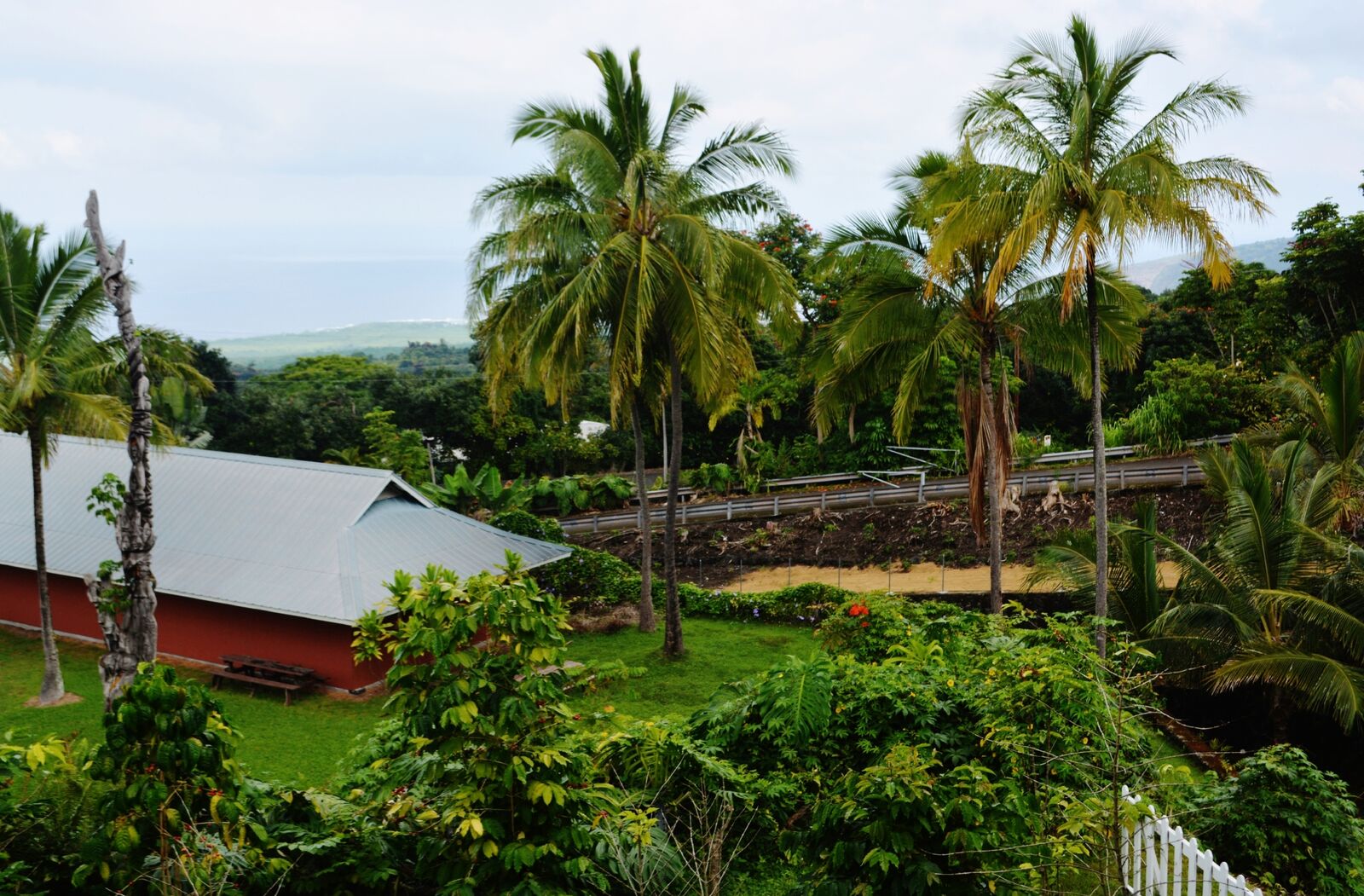 Just the mention of Kona coffee and most coffee aficionados know that java from Hawaii’s Big Island is premium—and for a darn good reason. One of the most expensive coffees in the world, its fine reputation is well-deserved.
Just the mention of Kona coffee and most coffee aficionados know that java from Hawaii’s Big Island is premium—and for a darn good reason. One of the most expensive coffees in the world, its fine reputation is well-deserved.
Big Island’s coffee story began in 1813, during the last years of Kamehameha’s reign when Spaniard Don Francisco introduced coffee plants to his gardens on the island of Oahu.
In 1828, the missionary Samuel Ruggles brought cuttings from Oahu to the Kona District where he was stationed. By 1840, the words Kona and coffee were synonymous.
Hawaii’s rich soil, climate, and elevation make it ideal for planting and harvesting coffee and its southwestern volcanic slopes where clouds sweep in during the afternoons and ocean breezes temper the sun make the island the perfect environment to grow coffee. Today there are hundreds of coffee farms located on the island.
Big Island bioregions are diverse each producing different coffee tastes. And unlike the other islands of Hawaii, only the Big Island farmers harvest the traditional way— handpicking the beans (known as cherries) one by one.
To be designated “Kona Coffee” it must be cultivated on the slopes of Hualalai and Mauna Loa in the North and South Kona Districts of the Big Island.
Determined to learn more about this incredibly rich coffee, we had the chance to visit a coffee mill highlighting the best of Kona coffees and island products and a tour of a working coffee farm.
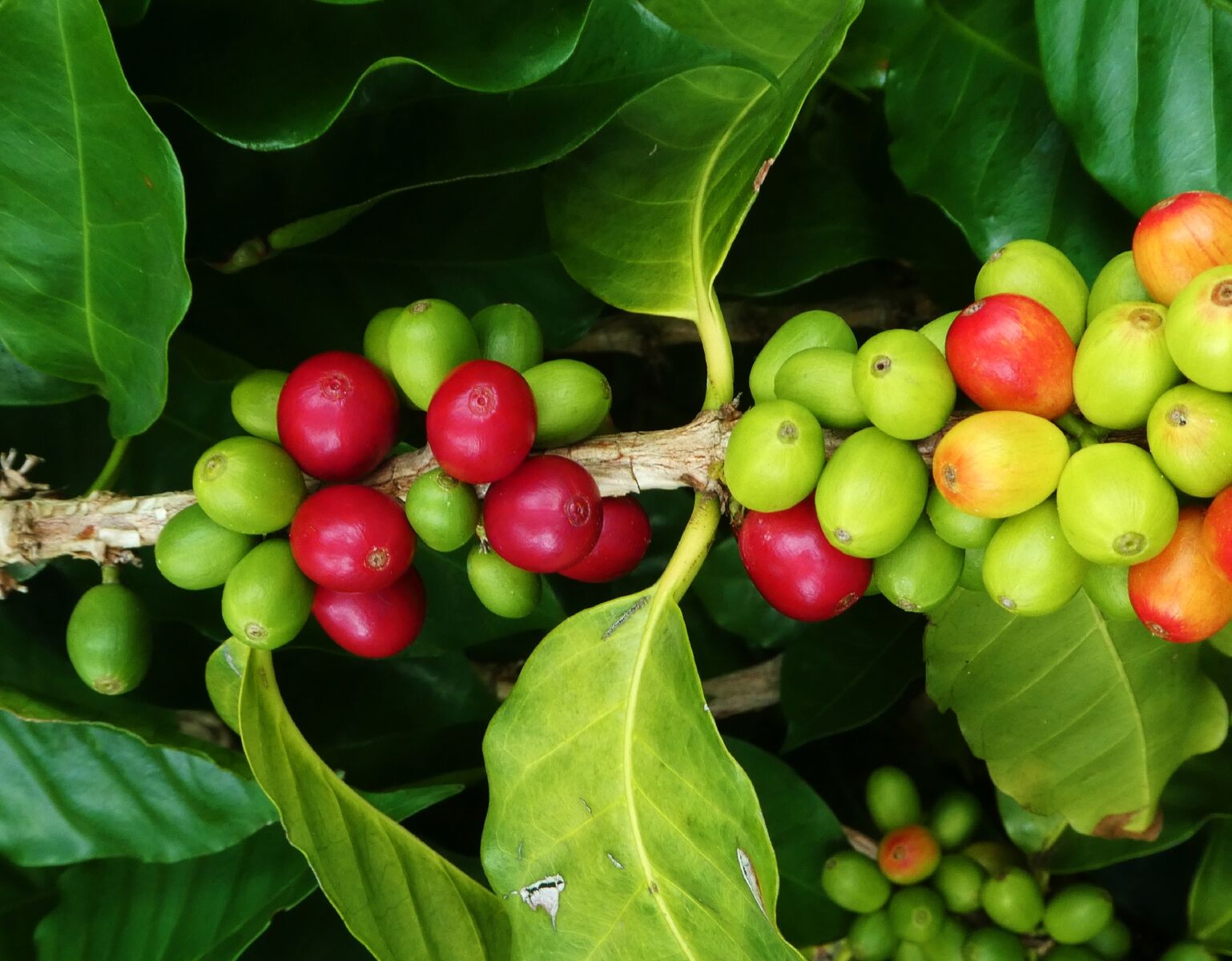 Royal Kona Coffee Mill
Royal Kona Coffee Mill
Just 20 minutes south of Kailua-Kona, in the historic town of Captain Cook sits the fascinating grounds of Royal Kona Coffee Mill.
Founded in 1968, Royal Kona Coffee’s goal was to introduce Kona Coffee to the world and share the aloha of this exceptionally flavorful bean they call the “Royalty of Coffee.” At the time, Kona coffee was still virtually unknown to the rest of the world.
Royal Kona is where the smaller Kona coffee farm growers bring their coffee beans to be processed. Some of these small farms are growing plants as high as 3,000 feet on the slopes of Mauna Loa and Hualalai volcanoes.
Walking around lush, verdant green groves with grand, sweeping views of the Pacific Ocean in the distance was a real treat. Towering, hand-carved totems stand watch over the property with their fiercely protective glares.
A delightfully “secret” feature of Royal Kona land situated right behind the main store is a lava tube formed years ago when molten rock surged from the volcano toward the ocean. As it flowed, the outer crust hardened while the inner lava continued to move. Once the flow stopped and emptied into the ocean, the hollow tunnel formation remained intact.
A lush tropical-plant covered entrance led to the opening of the well-lit lava tube exiting just a short distance to the other side. Ribbon striations of colored rock form the sides and top of the cave. Unknown to us at the time, the Big Island is literally filled with hundreds, perhaps thousands of these unique geologic anomalies.
The coffee mill’s impressive tasting center gives visitors the chance to sip numerous Kona coffees from its many island growing regions. Some of their most popular flavored coffee blends include chocolate macadamia nut, honey macadamia, hazelnut, coconut and special holiday roasts.
A special treat was pairing coffees with various Mauna Loa macadamia nuts, home-grown on the island of Hawaii in Hilo since 1949. From sweet to salty to chocolate-covered and spicy, these specialty nuts are like manna from the Gods.
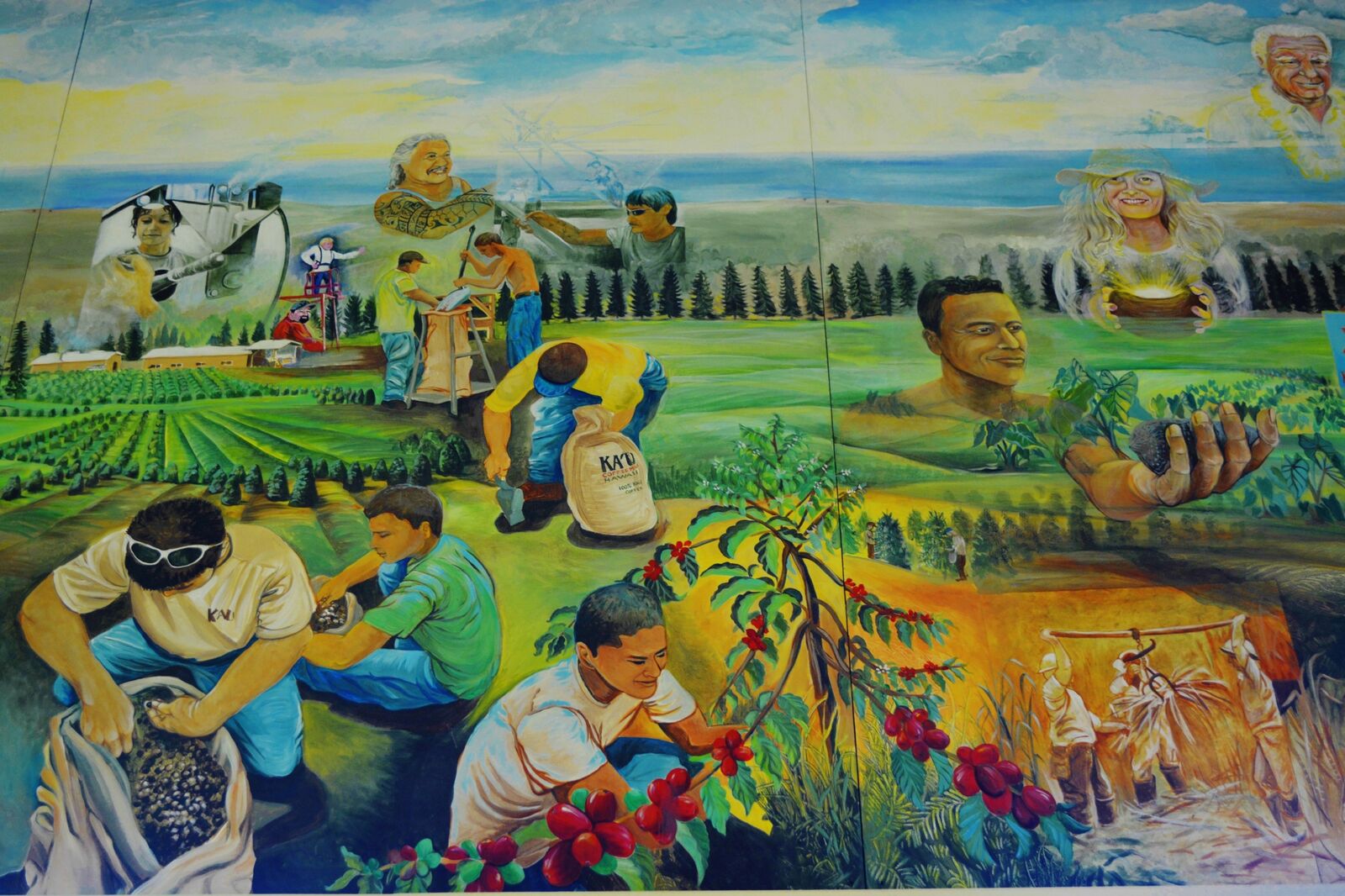 Ka’u Coffee Mill
Ka’u Coffee Mill
Located in Pahala on the south side of the island from the Hawaii Volcanoes National Park Ka’u Coffee Mill (pronounced ka-ooh) is just one of many family-owned coffee farms on the island.
Soils of this district are young but deep in nutrient-rich volcanic ash deposits from nearby Kilauea volcano. Coffee plants thrive in the area’s well-drained, porous and acidic loam.
The climate of the region provides hot and sunny mornings followed by characteristic cloud-filled afternoons with light rains. At night cold mountain air from Mauna Loa flows toward the coast cooling the region and allowing the coffee plants to store energy and sugars within the ripening beans.
After hand-picking, coffee beans are pulped, dried, hulled then processed, roasted and packaged on site. As we toured the picturesque groves of coffee trees and the processing facility, it was interesting to learn that it takes seven pounds of coffee cherries to produce a sellable pound of coffee beans. The red, ripened cherry is surprisingly sweet to the taste, and generally, there are two tiny beans at the center of each cherry.
When one bean fails to divide in half, a natural mutation of the coffee bean inside its cherry, it’s known as a peaberry—a highly prized coffee bean often called the champagne of Kona Coffee. The rare mutation happens in only 5% of the coffees, hence these beans carry a higher price tag.
Peaberry beans are highly prized for their smooth full flavor and low acid content. More concentrated than regular beans, the flavor jumps out on the palate.
Ka’u Coffees which can be sampled at their coffee gift store have won numerous state, national, and international cupping competitions hosted by the Hawaii Coffee Association and Specialty Coffee Association of America.
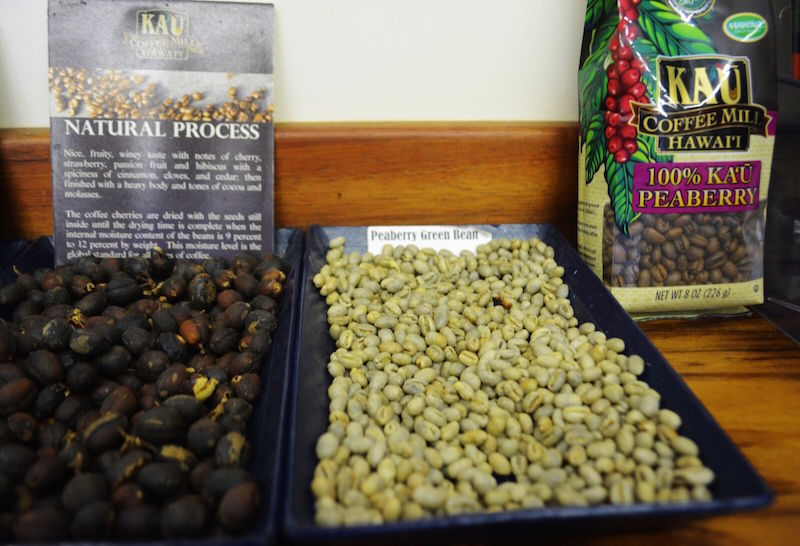 These awards describe the coffee as having rich flavor, piquant acidity and intriguing hints of sweetness and spice, citrus and jasmine aroma, fresh butter undertones, hints of lime and currant, and a long spice finish.
These awards describe the coffee as having rich flavor, piquant acidity and intriguing hints of sweetness and spice, citrus and jasmine aroma, fresh butter undertones, hints of lime and currant, and a long spice finish.
Colorful hand-painted murals adorn the walls of the gift store beautifully illustrating Big Island’s fascinating coffee history.
A sign in a boutique shop in Kona reads “Wake up and smell Aloha.” And that’s exactly what if feels like rising in paradise to the morning sun on the island of Hawaii with fresh Kona coffee brewing in the pot. We call it freshly ground heaven.
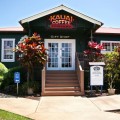

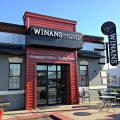
Leave a Reply